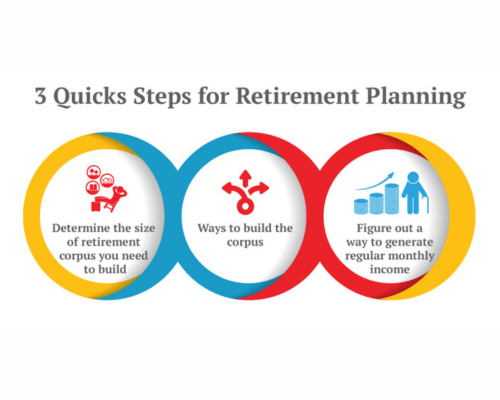
Retirement Planning: How to Ensure You Don’t Outlive Your Savings
Retirement planning is a crucial aspect of financial well-being, aimed at ensuring you can maintain your lifestyle and cover expenses when you stop working. One of the biggest fears retirees face is outliving their savings. With increasing life expectancy and the rising cost of living, it's essential to have a robust plan to secure your financial future. This article explores strategies to help you build a retirement nest egg and ensure financial security in your later years.
Start Early and Save Consistently
The Power of Compound Interest
One of the most effective ways to build a substantial retirement fund is by starting early. The earlier you start saving, the more time your money has to grow through the power of compound interest, where your investment earnings are reinvested to generate additional earnings.Consistent Contributions
Consistently contributing to your retirement accounts, such as a 401(k) or IRA, is crucial. Even small, regular contributions can add up over time. Make it a habit to save a percentage of your income each month, aiming for at least 10-15%.Diversify Your Investments
Asset Allocation
Diversification involves spreading your investments across various asset classes, such as stocks, bonds, and real estate, to reduce risk. An appropriate mix of assets depends on your age, risk tolerance, and retirement goals. Younger investors can typically afford to take on more risk with a higher allocation to stocks, while those nearing retirement might prefer a more conservative approach with bonds and cash equivalents.Rebalance Your Portfolio
Regularly reviewing and rebalancing your portfolio ensures that your investment strategy remains aligned with your goals and risk tolerance. Rebalancing involves adjusting the proportions of different asset classes to maintain your desired risk level.Maximize Retirement Account Contributions
Employer-Sponsored Plans
Take full advantage of employer-sponsored retirement plans like 401(k)s, especially if your employer offers matching contributions. Contributing enough to receive the full match is essentially "free money" and can significantly boost your retirement savings.Individual Retirement Accounts (IRAs)
In addition to employer-sponsored plans, consider contributing to an IRA. Traditional IRAs offer tax-deferred growth, while Roth IRAs provide tax-free withdrawals in retirement. The choice between them depends on your current tax situation and expectations for future tax rates.Plan for Healthcare Costs
Rising Medical Expenses
Healthcare is one of the largest expenses in retirement, and costs continue to rise. Planning for these expenses is crucial to avoid depleting your savings.Health Savings Accounts (HSAs)
If you're eligible, contributing to an HSA can be a smart move. HSAs offer triple tax advantages: contributions are tax-deductible, earnings grow tax-free, and withdrawals for qualified medical expenses are tax-free.Create a Withdrawal Strategy
Sustainable Withdrawal Rates
A common rule of thumb is the 4% rule, which suggests that withdrawing 4% of your retirement savings annually can help ensure that your funds last for a 30-year retirement. However, individual circumstances vary, and it's essential to tailor your withdrawal strategy to your specific needs and market conditions.Consider Longevity
With people living longer, it's prudent to plan for a retirement that could last 30 years or more. This might involve being more conservative with withdrawals in the early years or adjusting your spending if your investment returns are lower than expected.Delay Social Security Benefits
Maximize Your Benefits
Delaying Social Security benefits can significantly increase your monthly benefit amount. Benefits increase by approximately 8% per year for each year you delay taking them beyond your full retirement age, up to age 70. If you can afford to wait, this strategy can provide a higher guaranteed income later in life.Consider Annuities for Guaranteed Income
Annuities as a Safety Net
Annuities can provide a guaranteed income stream in retirement, helping to ensure you don't outlive your savings. There are various types of annuities, such as immediate, deferred, fixed, and variable, each with its own features and benefits. They can be particularly useful for covering essential expenses that aren't met by Social Security or other income sources.Plan for Inflation
Inflation Erosion
Inflation can erode the purchasing power of your savings over time. When planning for retirement, it's crucial to account for inflation in your investment strategy and withdrawal plans. This might involve investing in assets that tend to keep pace with inflation, such as stocks or real estate.Seek Professional Guidance
Consult a Financial Advisor
A financial advisor can provide personalized advice based on your unique financial situation, helping you develop a comprehensive retirement plan. They can assist with investment strategies, tax planning, and withdrawal strategies, ensuring that all aspects of your financial life are aligned with your retirement goals.Conclusion
Ensuring you don't outlive your savings requires careful planning, disciplined saving, and strategic investing. By starting early, diversifying your investments, maximizing retirement account contributions, and planning for healthcare and inflation, you can build a secure financial foundation for your retirement years. Remember, each individual's situation is unique, and working with a financial advisor can provide valuable guidance tailored to your specific needs and goals.All Categories
Recent Posts
guardianpolicies0 Comments
Preparing for Retirement Essential Financial Steps to Take in Your 40s and 50s
guardianpolicies0 Comments
The Impact of Credit Scores on Insurance Premiums What You Need to Know
guardianpolicies0 Comments




